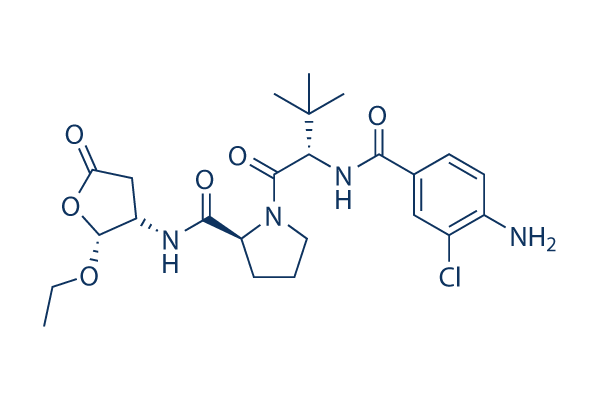Slides have been incubated for 15 min in biotin blocking solu tion to block endogenous peroxidase, avidin, and biotin before incubating slides in protein block at four C more than night. Key antibodies in concentrations from 1,100 to 1,2000 have been added to the slides and permitted to remain for 1 two h with frequent slide agitation to insure mixing on the slide. A biotinylated secondary antibody, diluted 1,10000 1,20000 and made use of as a beginning point for signal amplification, was added and permitted to stay in speak to with the cells for 1 h. Subsequently, array slides had been incubated employing the Dako Signal Amplification Technique working with a catalyzed reporter deposition of substrate to amplify the signal of your major antibody.
Slides had been incubated in streptavi din biotin peroxidase and biotinyl tyramide hydrogen peroxide reagents for 15 min every single with washing in involving the two incubations, three,three diaminobenzidine tet rachloride was cleaved by tyramide bound horseradish peroxidase, giving a stable brown precipitate. Analysis of RPPA Information Experimental Style and Deviations kinase inhibitor MP-470 We studied 11 cell lines with two replicates below the 4 development conditions resulting from combining 2D and 3D below normoxia and relative hypoxia, which would have ideally yielded 88 samples for measurement. Regrettably, as a result of technical difficulties, there was only 1 replicate for LNZ308 in 3D beneath normoxia and hypoxia and a single replicate for U87 in 3D in nor moxia. Hence, we studied only 85 samples. Luckily, the 41 pairs of precise replicates that did function are ade quate to let us estimate the scale of technical variation, which is much smaller sized than the var iance 0.
4615 for the cell line, growth situation, and therapy effects studied. Consequently, the replicate to replicate variation is sufficiently tiny and steady across our experiments relative to other sources of error that maintaining the selleck modest quantity of samples without having replicates won’t cause any distortion of the data. Numerical Preprocessing These samples have been examined utilizing 187 antibodies in RPPAs developed by the lead authors laboratory. Array images had been developed employing ImageQuant computer software, and individual spot values have been summarized working with the MicroVigene RPPA module. Following preprocessing was performed, we used the R package SuperCurve to summarize each five step dilution series into 1 log2 scale protein concentration worth.
The algorithm applied fits a joint four parameter logistic model. Values for 153 of these arrays passed signal to noise filters assessed on control samples, providing the 85 by 153 data matrix we received in the core facility. Rows of this matrix were centered around the median to adjust for potential differences  in sample loading. Correlations among replicate spottings from the similar samples on every single array have been also checked for con sistency, we retained only the 124 that showed correlations in excess of 0.
in sample loading. Correlations among replicate spottings from the similar samples on every single array have been also checked for con sistency, we retained only the 124 that showed correlations in excess of 0.
Anhydrase Signal
Renal carbonic anhydrase allows the reabsorption of bicarbonate ions in the proximal tubule.
